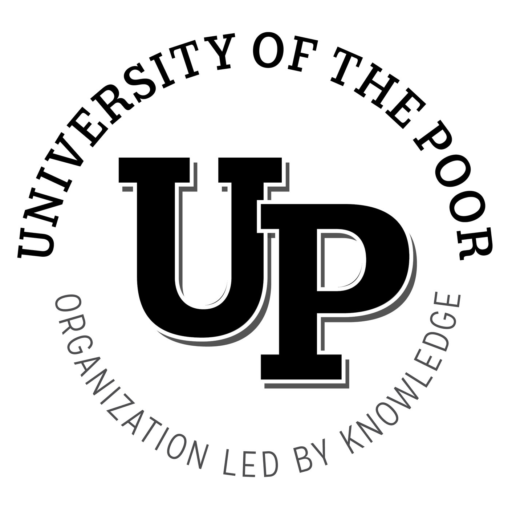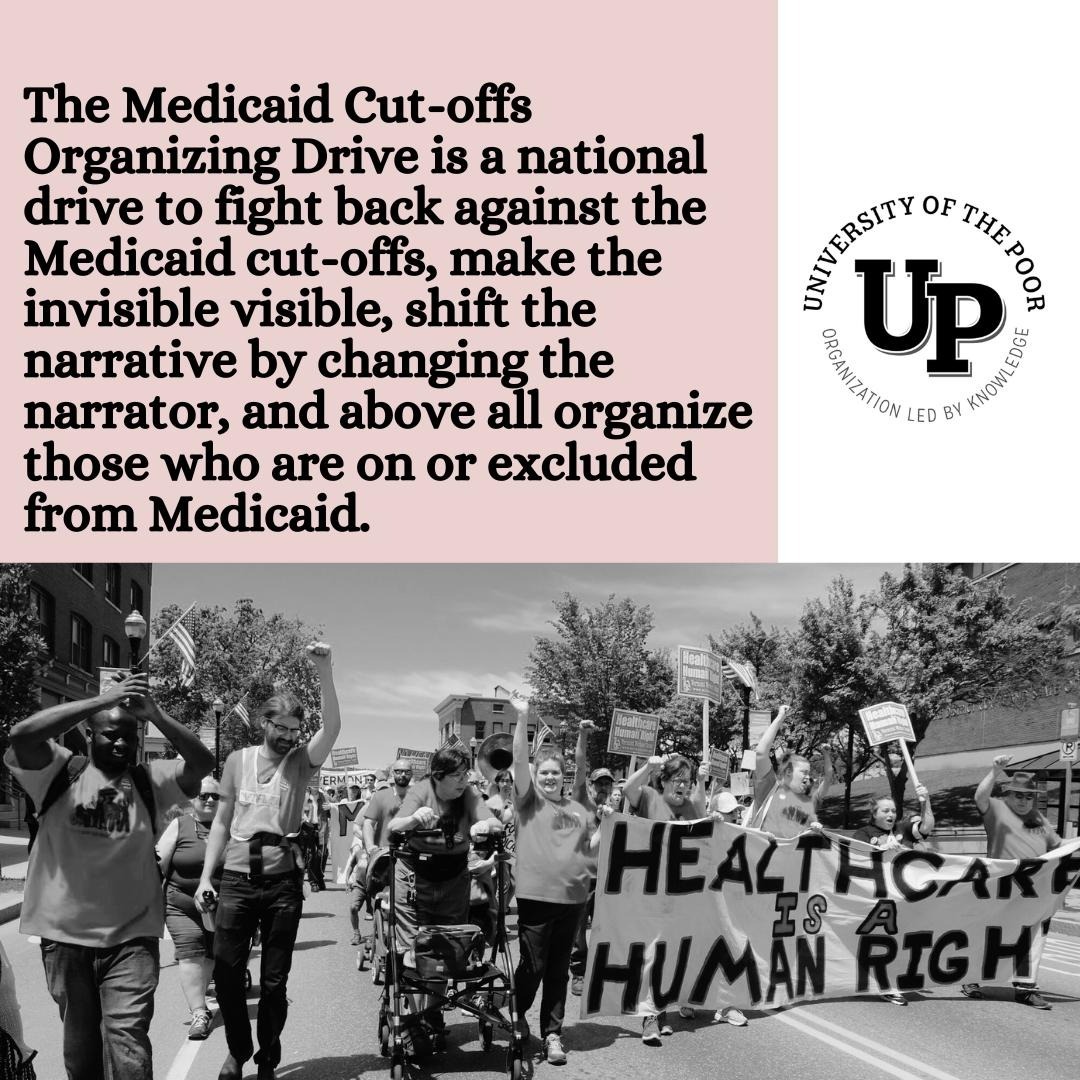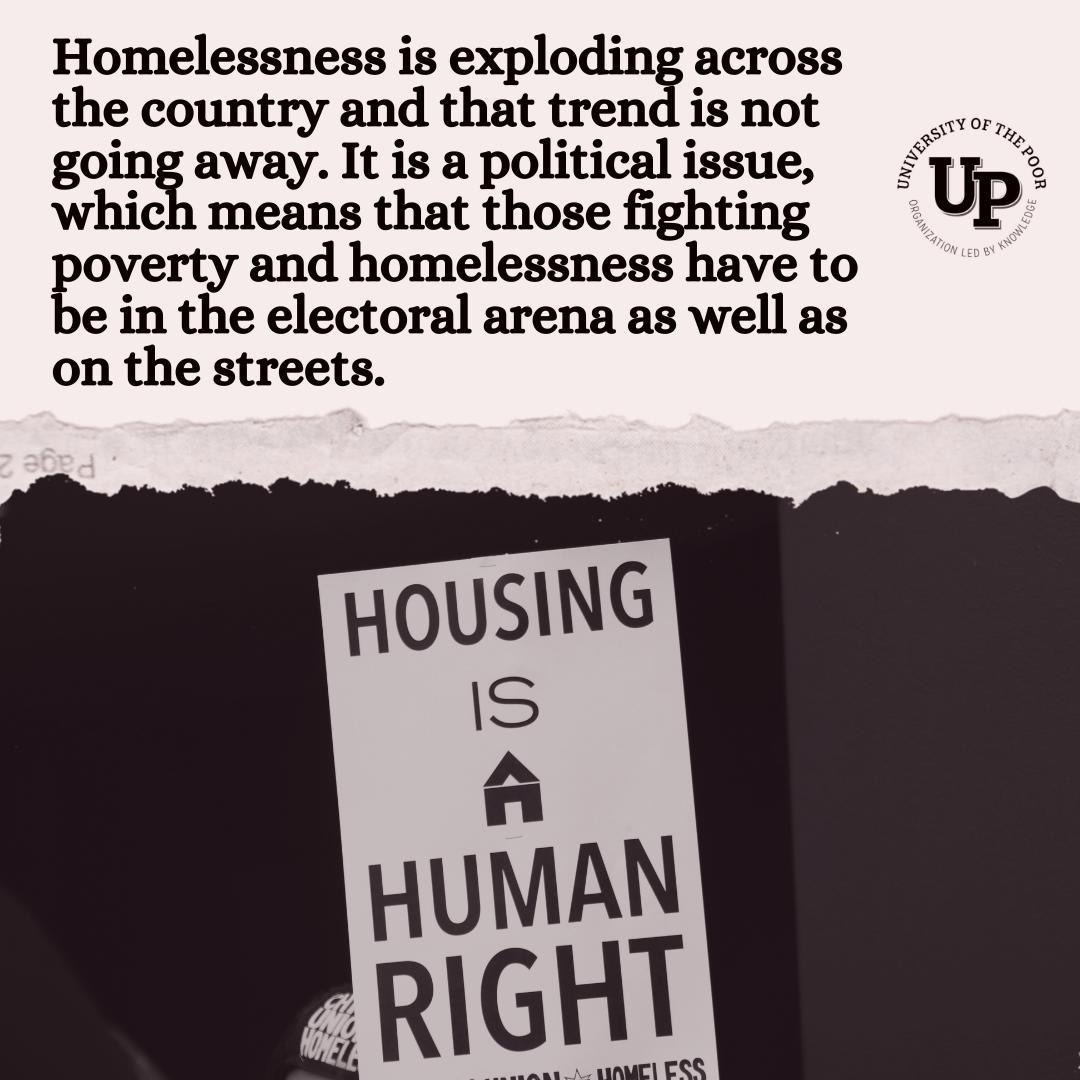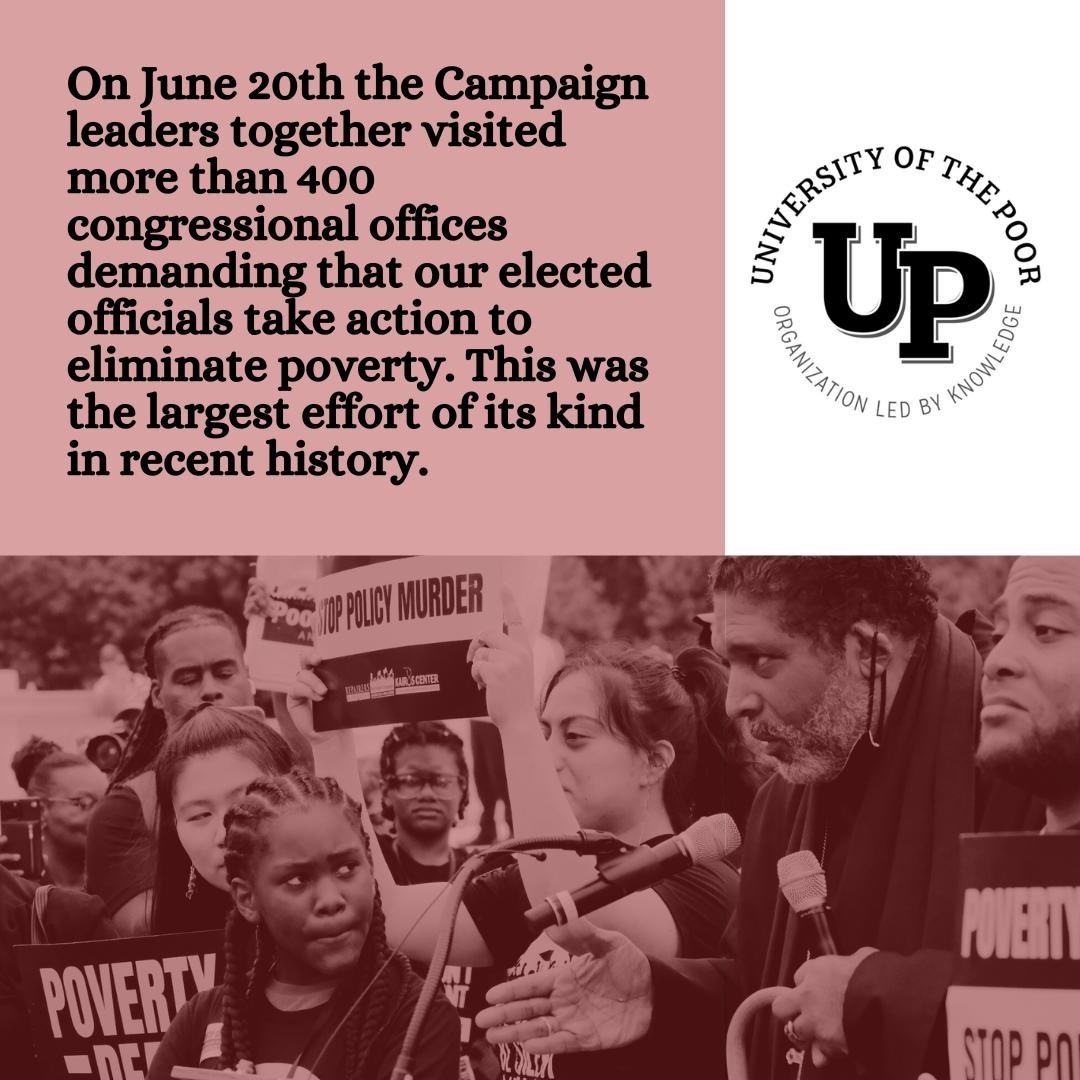By Nijmie Zakkiyyah Dzurinko
The U.S. is cutting up to 24 million people off of Medicaid resulting in state violence at a mass scale across the country. This deepening healthcare crisis is giving rise to strategic organizing across lines of division to unite the working class.
My wife and I lost our apartment in a fire [and I’m currently houseless] so they sent me a Medicaid renewal letter to my Mom’s address but I got it too late. So now they are telling me I have to go into the welfare office, but they recently moved the office in my district so I need to find the address. You should be able to just call on the phone and do it. Without Medicaid I couldn’t afford prescriptions and doctor visits. I need it for dental. To see specialists. God forbid, if necessary, for an extended hospital stay; I wouldn’t be able to afford any of it without Medicaid — that’s why there should be #NoMedicaidCutsPA and #Medicaid4All
– Bill, Philadelphia
We proved during the pandemic that healthcare is a human right… and it’s possible to make sure we provide protection for everyone. Reversing course now is just a cruel and intentional tactic to make the profiteers richer and to make us suffer! The time is now to recognize healthcare as a human right, put people over profits, and respect and protect everybody’s right to live!
-Becca Forsyth, Elmira, NY
My son applied for Medicaid in Georgia, but because he was an adult male, he was ineligible. When he moved to North Carolina, he applied again and learned he would be eligible if he and his wife separated. In hopes to save his life, they split. I still think of her as my daughter-in-law.
My son died April 1, 2008, He was 33.
If my son had been able to afford the annual colonoscopies, he’d still be with us. If he had been wealthy, he would have survived. Health care is a basic human right, not a handout. Secondly, to deny others the same human rights you enjoy is as wrong as one can get.
The death certificate says Michael died of complications from his birth defect, but that’s not true; my son died from poverty – the fourth leading cause of death in this, one of the wealthiest nations ever to exist.
-Leslie Boyd, North Carolina
What is Medicaid?
Understanding Medicaid and any social welfare program in the US has to be grounded in an awareness of the political, historical and economic context from which it emerged. The development of social welfare programs in the US capitalist system has been influenced by an interplay of forces. These include the ruling class’ interest in creating favorable labor conditions; the expanding national economy of the mid 20th century giving way to a global economy of the late 20th century; and the ongoing and historic struggle of the working class, within the U.S. and internationally, to organize society in our interest.
Medicaid was instituted in 1965 at the height of the Cold War as part of Title XIX of the Social Security Amendments, signed into law by President Lyndon Johson. It is the largest public health insurance program for low income Americans, and it ties healthcare to welfare. As such, it was designed to exclude workers who are in the labor market. In The Next Shift: The Fall of Industry and the Rise of Health Care in Rust Belt America (published by Harvard University Press, 2021), Gabriel Winant details the way our current health insurance system grew with the mass expansion of unionized labor in the early-mid 20th century. Health insurance as we know it developed as a negotiated benefit to workers as part of a labor contract. We can see the origins of Medicaid (and Medicare) in this context as programs designed to “fill in the gaps”.
Medicaid is administered both by the federal government and the states. It functions as a public/private partnership. It is financed publicly by the taxes collected from the working class and delivered by privately owned healthcare profiteers.
Of the 140 million people that the Poor People’s Campaign: A National Call for Moral Revival recognizes as poor and near-poor in this country, over 93 million are on Medicaid or CHIP (the Children’s Health Insurance Program). Millions more are unfairly excluded from Medicaid, whether because of documentation status, living in a state that has not expanded Medicaid under the Affordable Care Act, or making more than the obscenely low income limits. The total number of those on and excluded from Medicaid is greater than the 65 million Americans who are enrolled in Medicare, while 12.5 million people are “dual eligibles” for both programs.
Poverty = Death & the War on the Poor
The dominant narratives around Medicaid reflect the broader war on the poor in the U.S. today. People on Medicaid are stigmatized as “not working,” despite the fact that nearly 6 in 10 adults on Medicaid who are neither elderly or disabled are, in fact, employed. This stigma is internalized by those on Medicaid as well. During a Put People First! PA door-knocking drive in Butler County, Southwestern PA where per capita income is less than $24,000, a poor white mother stated defeatedly, “Well, I’m on welfare so I guess as they say I’m a drain on the system.”
Medicaid (also commonly called “welfare insurance”) is a program rife with categories that separate those who “qualify” from those who don’t. It is asset and means tested, meaning that people who get their healthcare through Medicaid are subject to degrading and burdensome processes of proving their eligibility. The administration of Medicaid contributes to the division of the working class into “deserving” and “undeserving.”
At the same time, Medicaid coverage is some of the most comprehensive coverage in the U.S. – often meeting the needs of individuals and families better than private insurance and Medicare. It has no co-pays or deductibles. Over time, Medicaid (like Medicare) has been largely privatized – in this case through Managed Care Organizations (MCOs). Fifty-two percent of Medicaid spending in the U.S. is currently going to MCOs, totaling more than $376 billion. Medicaid is big business, especially for the 5 largest MCOs: Aetna/CVS, Anthem, Centene, Molina, and UnitedHealth Group, which account for 50% of all Medicaid enrollment.
The University of the Poor Concept Paper states:
“Poverty today is no longer transient with the poor held in reserve for future expanding employment in production and circulation. It is now persistent and permanent…. This new era of labor-replacing technology — cheaper and more powerful micro-electronics and computers, along with increasingly sophisticated machine learning and artificial intelligence — is causing fundamental shifts in the world capitalist economy. It is daily driving more of the middle income strata into the ranks of the poor while rendering disposable an increasing number of the most impoverished sections of the dispossessed.”
This fundamental reality is what is driving profiteers like Kentucky-based Humana – the 4th largest health insurance provider in the U.S. – to announce in February 2023 that it would be leaving the employer-based healthcare market and focusing solely on government-funded healthcare programs such as Medicare, Medicaid and the Veterans Administration (VA).
As more and more people in this country are joining the ranks of the poor and dispossessed, with no end in sight, Medicaid is a clear cash cow for Wall Street. This is completely antagonistic to the organization of healthcare toward meeting human needs. Despite the constant allegations of Medicaid “waste, fraud, and abuse” leveled at the poor, the real culprits bilking Medicaid are MCOs like Centene who defrauded over two-dozen states through overbilling.
The “unwinding” – an American Horror Story
Like many other protections that emerged in the wake of the Covid 19 pandemic and the broad social unrest of the George Floyd uprising, the Trump administration instituted a continuous coverage mandate in the spring of 2020, requiring states to keep people on Medicaid for the duration of the Public Health Emergency declaration. Pre-pandemic, states would require everyone on Medicaid to re-apply on a yearly basis through the “re-determination” process. Re-applications are designed to exclude as many people as possible because of fluctuations in their income and administrative hurdles, such as not submitting paperwork on time or filling it out correctly. This reprieve, in which people could simply get healthcare without having to repeatedly prove their “worthiness” to the state ended when both parties in Congress agreed to begin cutting people off again – separating the continuous coverage mandate from the ending of the Public Health Emergency. This plan was added into the Omnibus bill and signed by President Biden in December 2022, with cuts beginning to take effect in April 2023. These policies show that healthcare is not a human right in this country.
Advocates attest that this is the largest change in the healthcare landscape since the passage of the Affordable Care Act in 2010. This time, also under a Democratic administration, up to 24 million people are losing their healthcare, in the richest country that has ever existed in the history of the world. This massive new front of the war on the poor has been fraudulently labeled “the unwinding” by the Democratic Party, their operatives, and the organizations who are politically dependent on them.
In states across the country – whether they are Medicaid expansion states or not, millions are currently being stripped of their healthcare. Over 500,000 will lose Medicaid in Georgia, over 1 million in Florida, Texas and New York. Indiana dropped 53,000 people in the first month of cut offs; one third were children. Pennsylvania expects that up to 1.2 million will lose coverage.
The Nonviolent Medicaid Army and the Medicaid Cut-offs Organizing Drive
The Nonviolent Medicaid Army (NVMA) emerged in Pennsylvania in 2018 after six years of statewide healthcare organizing in Put People First! PA. It evolved out of a growing understanding, based in the study of history and an analysis of the current conjuncture joined with present day experience, that people who are on or excluded from Medicaid represent the leading social force. The leading social force is the group of people with the most to gain and the least to lose from a fundamental transformation of society. The term “Nonviolent Medicaid Army” echoes MLK’s call to build a “nonviolent army of the poor” during the Poor People’s Campaign of 1968.
In 2020, the Nonviolent Medicaid Army developed into a national formation, drawing in organizations and states active in the networks of the Kairos Center, the National Union of the Homeless, and the Poor People’s Campaign: A National Call for Moral Revival. Building on the Vermont Workers Center’s successful tactic of Medicaid Marches, the NVMA held its first national Week of Action in September 2020, with marches in Alabama, California, Kansas, Maine, Massachusetts, New York, North Carolina, and Wisconsin. The army kept growing, creating a national Coordinating Committee and Organizing Team. As the NVMA expanded and developed between 2021 – 2023, its scope broadened beyond the Week of Action to include a deeper focus on leadership development, study, and training in organizing skills. Many chapters and committees of the Nonviolent Medicaid Army work in partnership to build the Poor People’s Campaign and other formations through the use of healthcare – and Medicaid specifically – as a site of fusion organizing that objectively unites a large segment of the divided and isolated US working class.
The Medicaid Cut-offs Organizing Drive is a national drive to fight back against the Medicaid cut-offs, make the invisible visible, shift the narrative by changing the narrator, and above all organize those who are on or excluded from Medicaid. The drive includes tactics like helping people file appeals and taking action outside of the courts where hearings are taking place; amplifying the plight, fight and insight of the cut-offs through the effective use of earned and movement media; and a broad base building program to “pan for gold” and identify new leaders to join the struggle. One of the goals of the organizing drive is to turn the life-and-death crisis that the ruling class and its state has imposed upon the working class through these healthcare cuts into a political crisis for them.
Building power and political independence toward 2024 and beyond
Those who are on or excluded from Medicaid live in every town, city, county, urban, suburban and rural area across the U.S. They are from every background, race, religion, gender and gender identity. The Nonviolent Medicaid Army is making significant advances in efforts to unite the working class across all lines of division and organize statewide and in all regions of the United States.
The Nonviolent Medicaid Army (NVMA) is dedicated to developing clear, competent, committed and connected leaders with a deep understanding of the fundamental problem of our time – the growing concentration of wealth in a few hands while the majority in the US and across the world is dispossessed. The NVMA treats healthcare as a strategic front of struggle that can be a rallying point for the working class and a point of weakness for those who own and control our economy and politics.
The ruling class has a fundamentally different interest in the healthcare system than the working class. For them, it is a recession-proof place to put their excess capital. For us, it is a matter of life and death in the struggle to secure our basic needs. With nearly 900 rural hospitals around the country at risk of closure, private equity firms see an opportunity to turn a quick and significant profit. While 100 million people are saddled with medical debt, investors poured $30 billion into 130 health care deals in 2020, and $21 billion across 130 deals through the third quarter of 2021. As more than one third of Covid deaths can be directly traced to a lack of healthcare, and the pandemic has resulted in more than 1 million people now living with a disability, the ruling class ensured that intellectual property rights and patents won out over people’s lives.
This fundamentally different interest finds expression in what Avery Book of the Vermont Workers Center has called “the organized abandonment of the working class by both major parties of Wall Street.” Politicians in both parties use healthcare as a political football, dangling promises in order to get elected but with no commitment to standing with the people against healthcare profiteers and ultimately enshrining healthcare as a human right by de-commodifying the healthcare system in the U.S.
The Nonviolent Medicaid Army helps us see that the struggle for healthcare is not about Red States vs. Blue States but about Wall Street and the 1% vs. the rest of us. Only a united movement of the poor and dispossessed, clear about who our true friends and true enemies are, has a chance of building the power to reorganize society in our own interests. As we look to the presidential election of 2024 and beyond, we have the chance to make the healthcare crisis into a serious crack in the armor of the ruling class.
Nijmie Zakkiyyah Dzurinko (she or they) is a working class Black, Indigenous and queer organizer, healer, and strategist of over 20 years from Pennsylvania. She is co-founder of Put People First! PA, a working class, statewide, base building human rights organization waging a healthcare is a human right campaign.




[…] Zakkiyyah Dzurinko chronicles the massive and deepening healthcare crisis and the policy murder of Medicaid cut-offs across the U.S. which are impacting millions of people in every county, town and state. Dzurinko […]
Because poor folk are often accused of “welfare fraud” and Medicaid ‘cheating’ in the media, while reading this piece by Nijmie, I took a moment to look at my state’s NYS OMIG (Medicaid Inspector General) Annual Report (2022). With quick calculations, I discovered the annual audits revealed that a whopping 85% of all the state’s Medicaid overpayments went to Medicaid Managed Care organizations–that’s $165.1million, and about 12% ($22.6million) went to ‘providers’ (physicians or their group practices). That’s ill-gotten taxpayer money going in just 2022 to the corporate health empire!
wow – thanks for looking into that Mary – truly theft of the working class!!
Oh, BTW, those fraud figures are ONLY for New York City where I live…the tables at the end of the report provide info on each major area of NYS. Look for the full State report: 2022 OMIG Annual Report.pdf